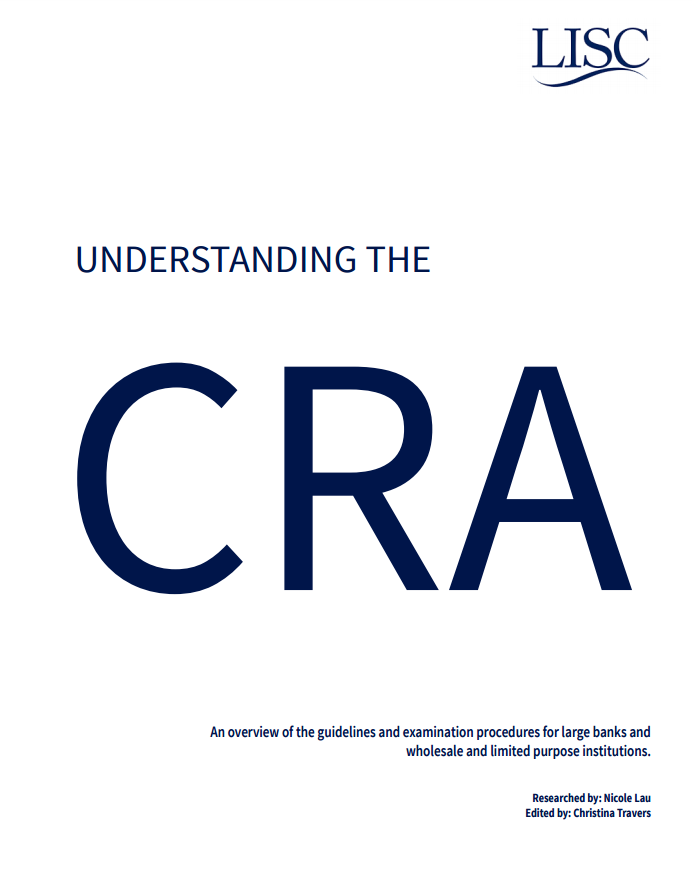Understanding the CRA
The Community Reinvestment Act (CRA) was enacted in 1977 to prevent redlining and encourage banks and savings institutions to meet the credit needs of all segments of their communities, including low- and moderate-income neighborhoods. The CRA has leveraged trillions of dollars through community development lending, investments, and services for low-and-moderate income neighborhoods, creating jobs, expanding affordable housing opportunities, and promoting small business development.
To ensure banks provide credit in a safe and sound manner and do not exclude low- and moderate-income communities, three federal agencies conduct regular CRA examinations and develop performance evaluations that vary by institution size and type. Banks are given a rating of “Outstanding,” “Satisfactory,” “Needs to improve,” or “Substantial noncompliance.”
CDFIs, like LISC, help financial institutions enhance their CRA performance by providing financial products and services to populations and businesses located in under served neighborhoods. Through loans to and investments in CDFIs, banks expand their ability to meet the capital and credit needs of their assessment area, an area where a bank’s main office, branches, and ATMs are located.
The memo, “Understanding the CRA,” outlines the framework and criteria the federal regulatory agencies use to assess a financial institution’s record of meeting its community needs.
